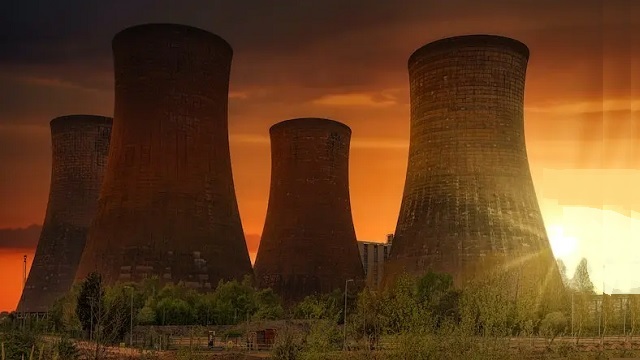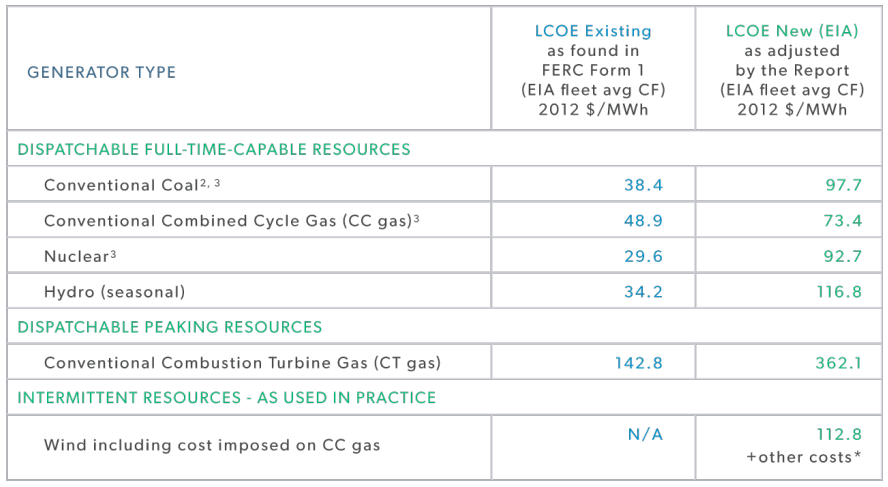The case for nuclear power

Despite its lethal past, nuclear energy is the clean and cost-effective power source we need.
In the fall 2022 issue of the technology-and-society journal The New Atlantis, authors Thomas and Nate Hochman examine the pros and cons of building new nuclear power plants in the United States. The case of nuclear power is fraught with political issues that are inextricably tied up with technical issues, but the Hochmans do a good job of laying out the problems facing nuclear power and some possible solutions.
If nuclear power had not been invented until 2010, say, it would probably be welcomed as the keystone in our society’s answer to climate change. Imagine a source of the most fungible type of energy — electricity — that takes teaspoons of nuclear fuel compared to carloads or pipelines full of fossil fuels, emits zero greenhouse gases, and when properly engineered runs more reliably than wind, solar, hydro, or sometimes even natural gas, as the misadventure of Texas’s Great Freeze of February 2021 showed. What’s to oppose? Well, a lot, as the Hochmans admit.
Deadly history
It is perhaps unfortunate that the first major use of nuclear technology was in the closing days of World War II, when the US became the only nation so far to employ nuclear weapons in wartime, killing hundreds of thousands of Japanese with bombs dropped on Hiroshima and Nagasaki. The long shadow of nuclear war has cast a darkness over the technology of nuclear power ever since, despite optimistic but misguided attempts to promote peaceful uses in the 1950s.
The Hochmans describe the golden era of US nuclear power plant construction, which ran roughly from 1967 to 1987, as a period in which the two major US manufacturers — General Electric and Westinghouse — offered “turn-key” plants that were priced competitively with coal-fired units. The utilities snapped them up, and the vast majority of existing plants were built in those two decades.
The turn-key pricing turned out to be a big mistake, however. Manufacturers expected the cost per plant to decline as economies of scale kicked in, but for a variety of reasons both technical and regulatory, the hoped-for economies never materialised. The particular pressurised-water technology that was used was adapted from early nuclear submarines, and in retrospect may not have been the best choice for domestic power plants. By the time the companies realised their mistake and switched to cost-plus contracts, they had lost a billion dollars, and utilities became much less enthusiastic when they had to pay the true costs of building the plants.
In the meantime, the National Environmental Policy Act (NEPA) was passed in 1970, making it much harder to obtain permits to build complicated things like nuclear plants. In the pre-Act days, permitting a plant sometimes took less than a year, but once NEPA passed, such speediness (and the resulting economies of fast construction) was a thing of the past.
Then came the Three-Mile Island nuclear accident in 1979 and the Chernobyl plant fire and disaster in 1986, further blackening the reputation of nuclear power in the public mind. Add to that the not-in-my-back-yard problems faced by attempts to find permanent storage locations for nuclear waste, and by 1990 the US nuclear industry was in a kind of coma from which it has not yet recovered.
The Hochmans point to France as a counterexample of a nation that made a conscious decision to go primarily nuclear for its electric power, and even today about 70% of France’s power is nuclear. But even France is having problems maintaining their aging plants, and French nuclear promoters face the same sorts of political headwinds that prevail in the US.
Viable option
Now that climate change is an urgent priority for millions of people and dozens of governments, the strictly technical appeal of nuclear power is still valid. It really does make zero greenhouse gases in operation, and when properly engineered, it can be the most reliable form of power, providing the essential base-load capacity that is needed to stabilise grids that will draw an increasing amount of energy from highly intermittent solar and wind sources in the future. Eventually, energy-storage technology may make it possible to store enough energy to smooth out the fluctuations of renewables, but we simply don’t have that now, and it may not come for years or decades.
In the meantime, there are plans on drawing boards for so-called “modular” plants. If every single automobile was a custom design from the ground up, including a from-scratch engine and body, only the likes of Elon Musk could afford to drive. But that was how nuclear plants were made back in the day: each design was customised to the particular site and customer specifications.
If manufacturers had the prospects of sales and freedom to develop a modular one-size-fits-all design, they could turn the process into something similar to the way mobile homes are made today: in factories, and then shipped out in pieces to be simply assembled on site. And newer designs favouring gravity feeds over powered pumps can be made much safer so that if anything goes wrong, the operators simply walk away and the plant safely shuts itself down.
Standing in the way of these innovations are (1) the prevailing negative political winds against nuclear power, enforced with more emotion than logic by environmental groups and major political parties, and (2) the need to change regulations to allow such technical innovations, which currently are all but blocked by existing laws and rules.
In the Hochmans’ best-case scenario, the US begins importing modular plants from countries where an existing base of nuclear know-how allows efficient manufacturing, which these days means places like China. Even if the US nuclear industry turned on full-speed today, it would take a decade or more to recover the expertise base that was lost a generation ago when the industry collapsed. Regulations and regulatory agencies would change from merely obstructing progress to reasoned cooperation with nuclear-plant manufacturing and installation. And we would derive an increasing proportion of our energy from a source that has always made a lot of technical sense.
On the other hand, things may just go on as they are now, with old plants closing and no new ones to take their place. That would be bad for a number of reasons, but reason hasn’t been the only consideration in the history of nuclear energy up to now.
This article has been republished from the author’s blog, Engineering Ethics, with permission.
AUTHOR
Karl D. Stephan
Karl D. Stephan received the B. S. in Engineering from the California Institute of Technology in 1976. Following a year of graduate study at Cornell, he received the Master of Engineering degree in 1977… More by Karl D. Stephan
RELATED ARTICLE: In Europe, the nuclear “comeback”
RELATED TWEET:
How dare they! 'Devastating consequences' as new Swedish government scraps environment ministry – Sweden's new right-wing govt has sparked an outcry after scrapping Ministry of Environment in a move the opposition has branded "devastating". | Euronews – https://t.co/nUNoIWLvz1
— Marc Morano (@ClimateDepot) October 23, 2022
EDITORS NOTE: This MercatorNet column is republished with permission. ©All rights reserved.


